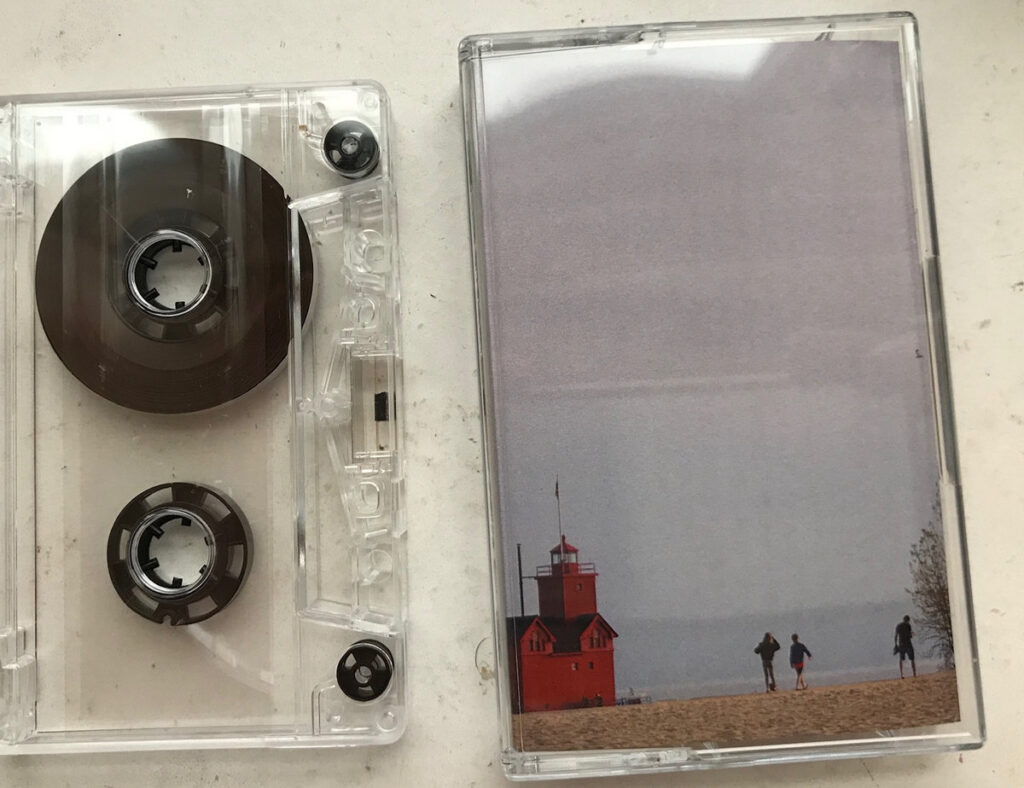Jakob Heinemann – Resonant Ocean
5.11.22 by Matty McPherson

Today we turn our attention towards Kashe Editions, the solo imprint of bassist/composer Jakob Heinemann. On Resonant Ocean, the label’s second release, the bassist finds himself in triple threat mode: composer, collage artist, and field recordist. The four compositions are edging for a naturalistic, deep listening and thinking modus. The tape itself, from Jcard cover to tape shell, subtly suggest this without beating around the bush. We have all found ourselves outside a small red lighthouse on the water, considering the passage of time.
Resonant Ocean’s four pieces go back and forth between field recording manipulations and loose classic compositions; a stately presence is never lacking on any of these pieces. Side A is the most scientific, jumping straight in with “Lea Projections.” It is one of Heinemann’s “sine tone, autoharp, and double bass” oriented tracks, that features a low level ominous drone. The three instruments aid and parallel the shifting within his Madison, WI area field recordings. Rickety? Yes, the inclusion of a field recording sounds impart a vague industrious character–like someone is building a Tuff Shed in their yard. Recalcitrant? Not over its 11 and a half minutes! A steely drone drifts between metallic mumbles and cicada scrawls, while Heinemann’s autoharp adds a well needed grace to this music. The field recordings and harmonic sleights are quite the juxtaposition on Lea Projections, its gravity felt in the bouts of silence or sudden stops.
It’s a primer for the reserved characteristics of track two, “Places.” Here, Heinemann leaves a composition for the trio of Oli Harris (cello), Seth Pae (viola), and Billie Howard (violin). The trio is not aided nor abetted by a field recording, yet they move with the composure of natural time. Over its ten minutes, they ebb and flow as a trio, building bouts of suspense, low end drones, or splashes of silence into a splendorous documentation of time itself. What strikes me is how they treat a climatic peak as something not to strike out in the end but rather as encounter that occurs on its own merit. Around the four minute mark, there is a a sudden shock with Howard’s Violin, a sound that is harmonized and considered, yet quickly pulled back with restraint of those cello drone.
Side B opens with “Arbor,” Heinemann’s sine tone composition. For its near nine minutes, small bits of bird sound are interposed within a long, continuous sine drone. Let yourself drift as focus turns from the drone itself to the flickers of bass and suddenly, the piece is as studious as a monk. The title track is a fitting closer, functioning as a summation of Heinemann’s MO across the three tracks into one dozen minute opus. A new quartet, Anna March (viola), Nave Graham (flute), Kyle Quass (Bb trumpet), and Anthony D’Agostino (double bass), takes shape, once again playing off of Heinemann’s MO. As a quartet goes they glide even at their most meticulous; they’re the kind of crew that would render a ship unthinkable. The piece is framed by Quass and D’Agostino quick work to enact a low waving drone that is as smooth as butter, while March and Graham add flourishes that recall Talk Talk’s Myrrhman. Clearly, they are onto something mighty pleasing and endearing, as they practically take the shape of a field recording. Over the twelve minutes, the piece devolves until it might as well be rendered the sound of a lighthouse overlooking a resonant, receptive ocean.
Edition of 50 Available from the Kashe Editions Bandcamp
